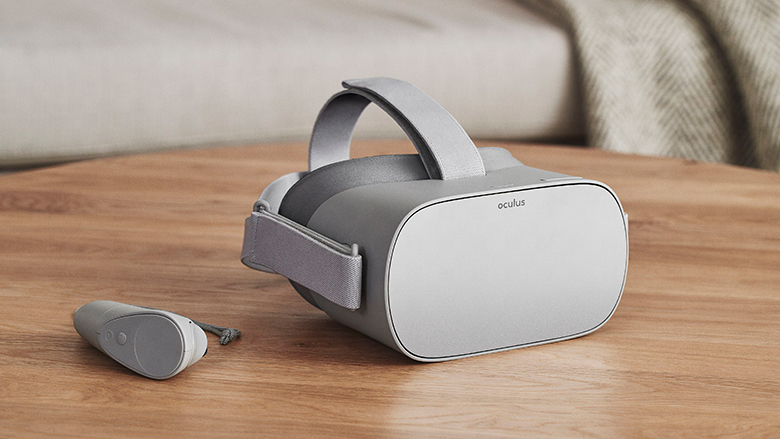
Facebook has an ambitious goal of getting one billion people into virtual reality, as CEO Mark Zuckerberg said during the company’s Oculus Connect conference on Wednesday. But virtual reality devices like the Oculus Rift and HTC Vive still aren’t widely embraced by the public — largely because they’re expensive, cumbersome to set up, and require a powerful computer in order to work.
Facebook is hoping to address these concerns with a new headset called the Oculus Go. The device, which launches early next year, is significantly cheaper than the Rift and doesn’t need to be powered by a phone or any other type of computer. The $199 Oculus Go has all of the necessary computing components built-in, making it easier to try virtual reality without having to worry about whether your phone, laptop, or desktop computer is powerful enough to run it. Facebook also says the new headset includes spatial audio for providing sound without headphones and improved lenses that reduce glare. Developers will be able to build apps that work on both the Oculus Go and Gear VR, and the Go will ship with some current Gear VR apps when it launches.
But the Oculus Go doesn’t support positional tracking the way the Oculus Rift does. That means the Go won’t be able to track where you move in space like the Rift can, since Oculus’ more expensive headset works with an external sensor to monitor your movements. It’s easiest to think of Oculus Go as a Gear VR but without the need for a smartphone.Facebook is also developing a separate wireless headset codenamed Project Santa Cruz that offers this level of tracking without requiring extra sensors, but there’s no launch date for that yet.
Read more: These 5 Apps Prove Augmented Reality Isn’t Just Hype
Several of Facebook’s competitors are working on similar technologies. Both HTC and Lenovo are creating standalone virtual reality headsets that will run on Google’s platform. These headsets will support positional tracking unlike the Oculus Go, but neither company has announced how much these gadgets will cost and when they’ll launch. Microsoft and its PC partners are also gearing up to release a slew of new virtual reality headsets with built-in positional tracking. These Windows-powered headsets, however, must remain tethered to a laptop.
Facebook’s Oculus Go is another signal that Silicon Valley is already solving virtual reality’s biggest problems. The emergence of standalone VR poses another important benefit: The type of computer you own will no longer dictate the virtual reality experiences you can participate in. Samsung’s Gear VR is the most popular virtual reality headset so far, according to findings from the International Data Corporation. But unless you own a recent Samsung smartphone, you won’t be able to use it.
The case is similar with Google’s Daydream platform — iPhones and older Androids phones won’t work with the headset. Virtual reality headsets that can run on independently means buying decisions will be driven more by how much a user is willing to spend and the level of immersion they want to experience rather than the equipment they already own.
More Must-Reads from TIME
- Cybersecurity Experts Are Sounding the Alarm on DOGE
- Meet the 2025 Women of the Year
- The Harsh Truth About Disability Inclusion
- Why Do More Young Adults Have Cancer?
- Colman Domingo Leads With Radical Love
- How to Get Better at Doing Things Alone
- Michelle Zauner Stares Down the Darkness
Contact us at letters@time.com